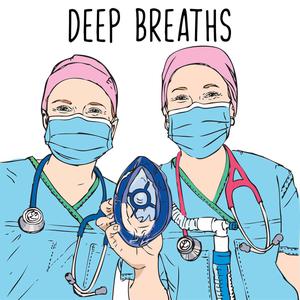
Deep Breaths
Deep Breaths
Welcome to Deep Breaths, a podcast covering topics related to the ANZCA part 2 anaesthetic exam. Now take a deep breath, relax, and enjoy easy to digest content which will supercharge your exam prep, or help you keep up to date.
- 1 hour 15 minutesS9 Ep. 8: Come Together (Live from the ANZCA ASM)
So get ready for something a little different... this week's episode was recorded live from the ANZCA Annual Scientific Meeting 2024, in our home city of Brisbane, Australia.
We interviewed some fascinating guests, covering topics as diverse as the role of the college moving forward, how we can be more sustainable in anaesthesia, and the future of podcasting; and we had plenty of fun along the way.
Enjoy this interactive and entertaining discussion with Dr Chris Cokis, Professor David Story, Professor Kate Leslie, Dr Andrew Cumpstey, Professor Eugenie Kayak, and Dr Lahiru Amaratunge.Feel free to email us at [email protected] if you have any questions, comments or suggestions. We love hearing from you!
And don't forget to claim CPD for listening if you are a consultant or fellow. Log us as a learning session which you can find within the knowledge and skills division, and as evidence upload a screenshot of the podcast episode.
Thanks for listening, and happy studying!3 November 2024, 7:00 pm - 33 minutes 50 secondsS9 Ep. 6: Bloodstream, part 2 (Anaesthesia for ruptured AAA repair)
Today's episode is the second of our two part series on ruptured AAA repairs. We discuss the case of a 72 year old man with a ruptured abdominal aortic aneurysm that is contained, and who is scheduled for an urgent endovascular repair within the interventional radiology suite with special guest, Dr Lahiru Amaratunge.
Apologies for the audio quality in this episode - even though it sounds like we recorded on a submarine, we can assure you we were sitting in our study the entire time.
Resources for today's episode:
BJAED: Anaesthesia for endovascular repair of ruptured abdominal aortic aneurysmsby K. Berry et al.
LITFL: AAA by C. Nickson
Lancet: Endovascular versus open repair of abdominal aortic aneurysm in 15-years' follow-up of the UK endovascular aneurysm repair trial 1 (EVAR trial 1): a randomised controlled trial by Patel, R. et al.
Annals of Surgery: Endovascular Repair of Abdominal Aortic Aneurysm in Patients Physically Ineligible for Open Repair: Very Long-term Follow-up in the EVAR-2 Randomized Controlled Trial by Sweeting, M. et al.Feel free to email us at [email protected] if you have any questions, comments or suggestions. We love hearing from you!
And don't forget to claim CPD for listening if you are a consultant or fellow. Log us as a learning session which you can find within the knowledge and skills division, and as evidence upload a screenshot of the podcast episode.
Thanks for listening, and happy studying!20 October 2024, 7:00 pm - 31 minutes 27 secondsS9 Ep. 5: Bloodstream, part 1 (Anaesthesia for ruptured AAA repair)
Today - in part 1 of our 2 part series - we talk through the case of an 82 year old man with a ruptured abdominal aortic aneurysm who is scheduled for urgent open repair with special guest, Dr Lahiru Amaratunge.
Resources for today's episode:
BJAED: Anaesthesia for endovascular repair of ruptured abdominal aortic aneurysms by K. Berry et al.
LITFL: AAA by C. Nickson
Lancet: Endovascular versus open repair of abdominal aortic aneurysm in 15-years' follow-up of the UK endovascular aneurysm repair trial 1 (EVAR trial 1): a randomised controlled trial by Patel, R. et al.
Annals of Surgery: Endovascular Repair of Abdominal Aortic Aneurysm in Patients Physically Ineligible for Open Repair: Very Long-term Follow-up in the EVAR-2 Randomized Controlled Trial by Sweeting, M. et al.Feel free to email us at [email protected] if you have any questions, comments or suggestions. We love hearing from you!
And don't forget to claim CPD for listening if you are a consultant or fellow. Log us as a learning session which you can find within the knowledge and skills division, and as evidence upload a screenshot of the podcast episode.
Thanks for listening, and happy studying!6 October 2024, 7:00 pm - 22 minutes 42 secondsS9 Ep. 4: Hungry Like the Wolf - update (GLP-1 receptor agonist guidelines)
In today's episode, we cover the recently released consensus clinical practice recommendation regarding the peri-procedural use of the GLP-1 and GIP receptor antagonists.
Enjoy this topical episode - this is sure to be an evolving area.Feel free to email us at [email protected] if you have any questions, comments or suggestions. We love hearing from you!
And don't forget to claim CPD for listening if you are a consultant or fellow. Log us as a learning session which you can find within the knowledge and skills division, and as evidence upload a screenshot of the podcast episode.
Thanks for listening, and happy studying!22 September 2024, 7:00 pm - 25 secondsS9 update - Better Late Than Never - delay to this week's ep
This week we're under the pump with work and life, but we'll be with you soon and it's a cracker of an episode covering an extremely topical subject.
Keep an eye out for our next episode dropping something in the next couple of weeks. As an apology, we'll have a bonus ep coming sometime towards the end of the season!Feel free to email us at [email protected] if you have any questions, comments or suggestions. We love hearing from you!
And don't forget to claim CPD for listening if you are a consultant or fellow. Log us as a learning session which you can find within the knowledge and skills division, and as evidence upload a screenshot of the podcast episode.
Thanks for listening, and happy studying!9 September 2024, 1:00 am - 17 minutes 28 secondsS9 Ep. 3: Gimme gimme shock treatment, part 3 (Inotropes and vasopressors)
Today's episode is the final in our series on inotropic and vasopressor medications. Today, we're going to tackle some of the more obscure inotropes and vasopressors - these medications typically aren't encountered terribly often within anaesthesia. During this episode, we discuss milrinone, levosimendan, methylene blue and hydroxocobalamin (Vitamin B12).
Resources for today's episode:
StatPearls:
Inotropes and vasopressors by D. VanValkinburgh et al.
Adrenergic Drugs by K. Farzam et al.
LITFL:
Inotropes, vasopressors and other vasoactive agents by C. Nickson
Milrinone by C. Nickson
Levosimendan by C. Nickson
Methylene blue by C. Nickson
Hydroxocobalamin by N. Long
Deranged Physiology:
Classification of inotropes and vasopressors
Milrinone
Levosimendan
DRUGBANK Online:
Milrinone
LevosimendanFeel free to email us at [email protected] if you have any questions, comments or suggestions. We love hearing from you!
And don't forget to claim CPD for listening if you are a consultant or fellow. Log us as a learning session which you can find within the knowledge and skills division, and as evidence upload a screenshot of the podcast episode.
Thanks for listening, and happy studying!25 August 2024, 7:00 pm - 14 minutes 35 secondsS9 Ep. 2: Gimme gimme shock treatment, part 2 (Inotropes and vasopressors)
Today's episode - the second in our three episode series focusing on inotropic and vasopressor medications - sees us covering some more medications commonly (or uncommonly, depending on your scope of practice) encountered within anaesthesia. During this episode, we discuss vasopressin, dopamine and dobutamine.
Resources for today's episode:
StatPearls:
Inotropes and vasopressors by D. VanValkinburgh et al.
Adrenergic Drugs by K. Farzam et al.
LITFL:
Inotropes, vasopressors and other vasoactive agents by C. Nickson
Vasopressin by C. Nickson
Dopamine by C. Nickson
Dobutamine by C. Nickson
Deranged Physiology:
Classification of inotropes and vasopressors
Vasopressin
Dobutamine
DRUGBANK Online:
Vasopressin
Dopamine
Dobutamine
BJAED:
Vasopressin and its role in critical care by A. Sharman & J. Low.Feel free to email us at [email protected] if you have any questions, comments or suggestions. We love hearing from you!
And don't forget to claim CPD for listening if you are a consultant or fellow. Log us as a learning session which you can find within the knowledge and skills division, and as evidence upload a screenshot of the podcast episode.
Thanks for listening, and happy studying!11 August 2024, 7:00 pm - 15 minutes 6 secondsS9 Ep. 1: Gimme gimme shock treatment, part 1 (Inotropes and vasopressors)
Today's episode is the first in a series of three that focus on inotropic and vasopressor medications used within anaesthetic practice. During this episode, we discuss metaraminol, ephedrine, phenylephrine, noradrenaline and adrenaline.
There's one section of our episode where we thought it important to clarify what we're saying, as to out ears it sounds a little confusing. During our discussion about adrenaline, we state that both noradrenaline and adrenaline have the same affinity for beta-1 adrenoceptors. We then advise that the reason for the inotropic and chronotropic effects of adrenaline - not seen with noradrenaline - are because adrenaline has much greater affinity for beta-2 adrenaceptors than noradrenaline.
Resources for today's episode:
StatPearls:
Inotropes and vasopressors by D. VanValkinburgh et al.
Adrenergic Drugs by K. Farzam et al.
LITFL:
Inotropes, vasopressors and other vasoactive agents by C. Nickson
Metaraminol by R. Buttner
Phenylephrine by C. Nickson
Noradrenaline by C. Nickson
Adrenaline by C. Nickson
Deranged Physiology:
Classification of inotropes and vasopressors
Metaraminol
Noradrenaline
Adrenaline
DRUGBANK Online:
Metaraminol
Ephedrine
Phenylephrine
Noradrenaline
AdrenalineFeel free to email us at [email protected] if you have any questions, comments or suggestions. We love hearing from you!
And don't forget to claim CPD for listening if you are a consultant or fellow. Log us as a learning session which you can find within the knowledge and skills division, and as evidence upload a screenshot of the podcast episode.
Thanks for listening, and happy studying!28 July 2024, 7:00 pm - 24 minutes 22 secondsS8 Ep. 10: True trans soul rebel (Anaesthesia for transgender and gender diverse adults)
Today, we discuss a 2023 BJA Education article titled 'Perioperative care for transgender and gender diverse adults'. We start with a discussion of words and terms that are useful to understand, before diving in to discussions about a trauma-informed care approach to minimise and hopefully eradicate negative preoperative experiences, physical, chemical and surgical options for gender affirmation, and lastly how this can inform the provision of safe anaesthesia for transgender patients.
Resources for this episode:
BJA Education: Perioperative considerations for transgender and gender diverse adults by Harding, D. et al.Feel free to email us at [email protected] if you have any questions, comments or suggestions. We love hearing from you!
And don't forget to claim CPD for listening if you are a consultant or fellow. Log us as a learning session which you can find within the knowledge and skills division, and as evidence upload a screenshot of the podcast episode.
Thanks for listening, and happy studying!9 June 2024, 7:00 pm - 23 minutes 49 secondsS8 Ep. 9: The long and winding road, part 2 (Anaesthesia for post-heart-transplant patients)
Today, in part 2 of our 2 part series on anaesthesia for previous heart transplant recipients, we discuss the care of these patients for non-cardiac surgery with special guest, Dr Ivan Rapchuk.
We begin by covering the electrophysiology of a transplanted heart and what you may see on the ECG, and then proceed to the management of our theoretical patient for general anaesthesia for non-cardiac surgery.
Resources for this episode:
Oxford Handbook of Transplant Anaesthesia and Critical Care
BJAED: Anaesthesia for a patient with a cardiac transplant (2002) by Morgan-Hughes, N. & Hood, G.
Circulation (2004): Drug therapy in the heart transplant recipient by Lindenfeld, J. et al.
Indian Journal of Anaesthesia: Post cardiac transplant recipient: Implications for anaesthesia by M. Choudhury
RCEM India Learning - The ECG after cardiac transplantationFeel free to email us at [email protected] if you have any questions, comments or suggestions. We love hearing from you!
And don't forget to claim CPD for listening if you are a consultant or fellow. Log us as a learning session which you can find within the knowledge and skills division, and as evidence upload a screenshot of the podcast episode.
Thanks for listening, and happy studying!26 May 2024, 7:00 pm - 20 minutes 5 secondsS8 Ep. 8: The long and winding road, part 1 (Anaesthesia for post-heart-transplant patients)
Today, in part 1 of our 2 part series on anaesthesia for previous heart transplant recipients, we discuss the care of these patients for non-cardiac surgery with special guest, Dr Ivan Rapchuk.
We start our discussion with a review of how to assess whether these patients are suitable for elective surgery, and follow this with a deep-dive on the typical immunosuppressant medications that these patients may be taking, as well as their mechanism of action and side effects.
Resources for this episode:
Oxford Handbook of Transplant Anaesthesia and Critical Care
BJAED: Anaesthesia for a patient with a cardiac transplant (2002) by Morgan-Hughes, N. & Hood, G.
Circulation (2004): Drug therapy in the heart transplant recipient by Lindenfeld, J. et al.
Indian Journal of Anaesthesia: Post cardiac transplant recipient: Implications for anaesthesia by M. Choudhury
RCEM India Learning - The ECG after cardiac transplantationFeel free to email us at [email protected] if you have any questions, comments or suggestions. We love hearing from you!
And don't forget to claim CPD for listening if you are a consultant or fellow. Log us as a learning session which you can find within the knowledge and skills division, and as evidence upload a screenshot of the podcast episode.
Thanks for listening, and happy studying!12 May 2024, 7:00 pm - More Episodes? Get the App
Your feedback is valuable to us. Should you encounter any bugs, glitches, lack of functionality or other problems, please email us on [email protected] or join Moon.FM Telegram Group where you can talk directly to the dev team who are happy to answer any queries.
 Obsgynaecritcare
Obsgynaecritcare
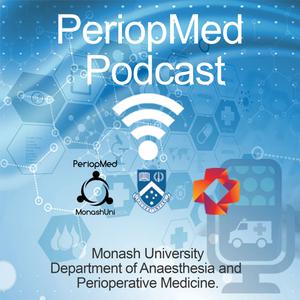 Perioperative Medicine Podcast Series
Perioperative Medicine Podcast Series
 BJA Education Podcasts
BJA Education Podcasts
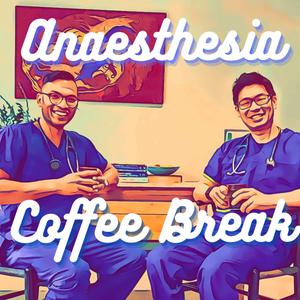 Anaesthesia Coffee Break
Anaesthesia Coffee Break
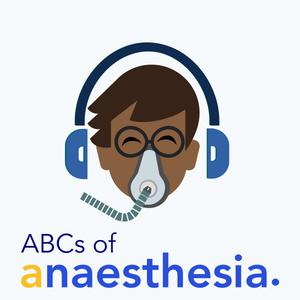 ABCs of Anaesthesia
ABCs of Anaesthesia
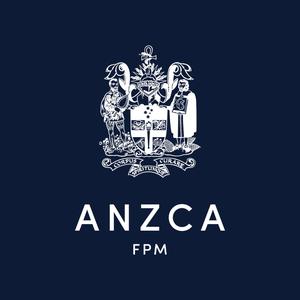 ANZCA
ANZCA